NGC 4214
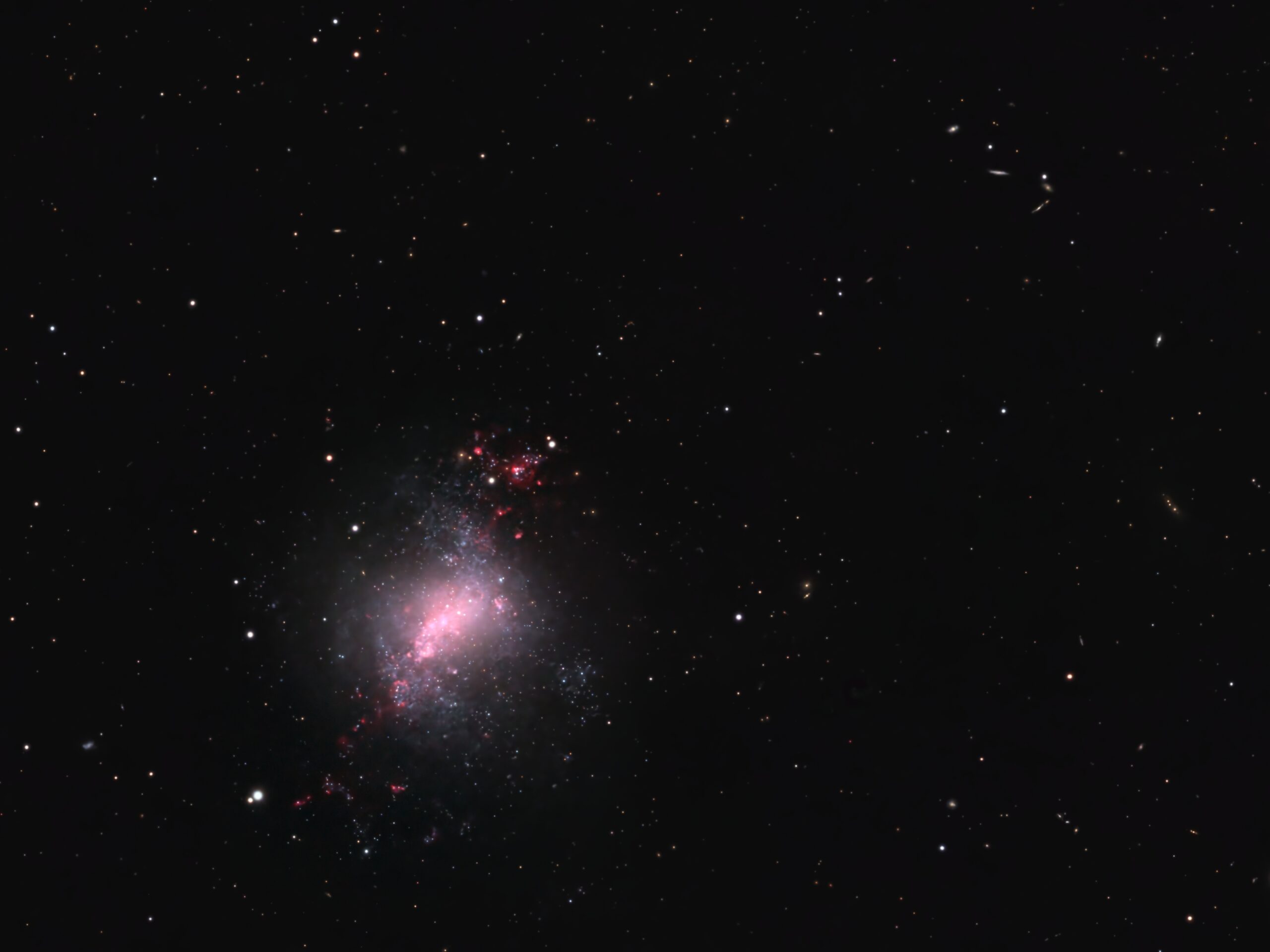 Click image for full size version
Click image for full size version
May 18, 2024
NGC 4214 is a dwarf barred irregular galaxy in Canes Vanatici (the Hunting Dogs), about 10 million light years away. It is thought to be similar in some ways to the Large Magellanic Cloud, one of the Milky Way’s satellite galaxies. However, it is bigger, and unlike our neighbour NGC 4214 is very active in terms of star formation, and is considered a starburst galaxy. Several blue star clusters and pink nebulae are easily visible within it. The nebulae are star-forming regions similar to the Orion Nebula in the Milky Way. It is about one quarter the size of the Moon on the sky. I framed the image this way to include the little cluster of galaxies at upper right, only one for which I was able to find a catalogue number. NGC 4214 is also catalogued as NGC 4228. Its s part of the M94 group of galaxies.
Tekkies:
Acquisition, focusing, and control of Paramount MX mount with N.I.N.A., TheSkyX. Guiding with PHD2. Primalucelab low-profile 2″ Essato focuser and ARCO rotator. Equipment control with PrimaLuce Labs Eagle 4 Pro computer. All pre-processing and processing in PixInsight. Acquired from my SkyShed in Guelph. Data acquired under variable moonlight and average transparency and seeing between May 5-7, 2024.
Celestron 14″ EDGE HD telescope at f/11 (3,912 mm focal length) and QHY600M camera binned 2×2 with Optolong filters.
15 x 5m Red = 1hr 15m
12 x 5m Green = 1hr 00m
16 x 5m Blue = 1hr20m
44 x 5m Lum = 3hr40m
18 x 5m Ha = 1hr 30m
Total: 8hr 45m
Preprocessing: The WeightedBatchPreProcessing script was used to perform calibration, cosmetic correction, weighting, registration, local normalization, integration and Drizzle integration of all frames (Luminance only).
RGB master: A master RGB image was made from the Red, Green and Blue masters using ChannelCombination in RGB mode.
Gradient Removal: DBE was used to remove gradients from the RGB, Lum and Ha masters.
Colour Calibration: SpectroptometricColorCalibration was used to calibrate the RGB master.
Deconvolution: BlurXterminator was applied to the RGB, Ha and Lum masters with Automatic psf , star sharpening set to 0.5, and non-stellar set to 0.5.
Star Removal: StarXterminator was used to remove the stars from the RGB, Ha and Lum masters, with default settings, except Large Overlap was selected. The RGB and Lum stars-only images were retained.
Linear Noise Reduction: NoiseXterminator was applied to the RGB, Ha and Lum masters with settings Amount=0.9 and Detail=0.1
Ha Continuum Subtraction: The ContinuumSubtraction script was used to remove continuum emissions from the Ha image.
Stretching: HistogramTransformation was applied to the RGB, Ha and Lum masters to make pleasing images. Approximate background level after stretch was 0.08 for Ha, 0.1 for Lum, and 0.09 for RGB.
Nonlinear Processing
Combinining Lum and RGB: LRGBCombination was used to replace the lightness channel of the RGB image with the Lum master.
Addition of Ha to LRGB: The NBRGBCombination script was used to combine the Ha with the LRGB.
Nonlinear Noise Reduction: NoiseXterminator was used to reduce noise in the background areas of the SynthLHaRGB master with Amount=0.9 and Detail=0.15.
Re-stretch: HistogramTransformation was used to boost contrast by moving the dark point to the toe of the histogram and slightly decreasing the mid-point slider.
Contrast Enhancement: LocalHistogramEqualization was applied twice using a mask to select the entire galaxy. A Contrast Limit of 1.5 and 1 iteration was used for each LHE application (scale 30, strength 0.2; scale 80, strength 0.15).
Contrast, Brightness and Colour: Background and galaxy brightness, contrast, and saturation were adjusted in several iterations using CurvesTransformation with masks as required.
Stars-only steps: HistogramTransformation was applied to the RGB and Lum stars-only images. They were combined as for the starless images using LRGBCombination. The Lum stars-only image was then used as a mask and CurvesTransformation’s saturation slider was used to boost colour in the stars.
Star Restoration: The PixelMath expression combine(starless, stars, op_screen()) was used to combine the starless LHaRGB starless image with the stars-only image.
Final Steps: Background, galaxy, and star brightness, contrast, hue, and saturation were adjusted in several iterations using CurvesTransformation with masks as required. ICCProfileTransformation (sRGB IEC61966-2.1; Relative Colorimetric with black point compensation) was applied prior to saving as a jpg. The finder chart was made using the FindingChart process.

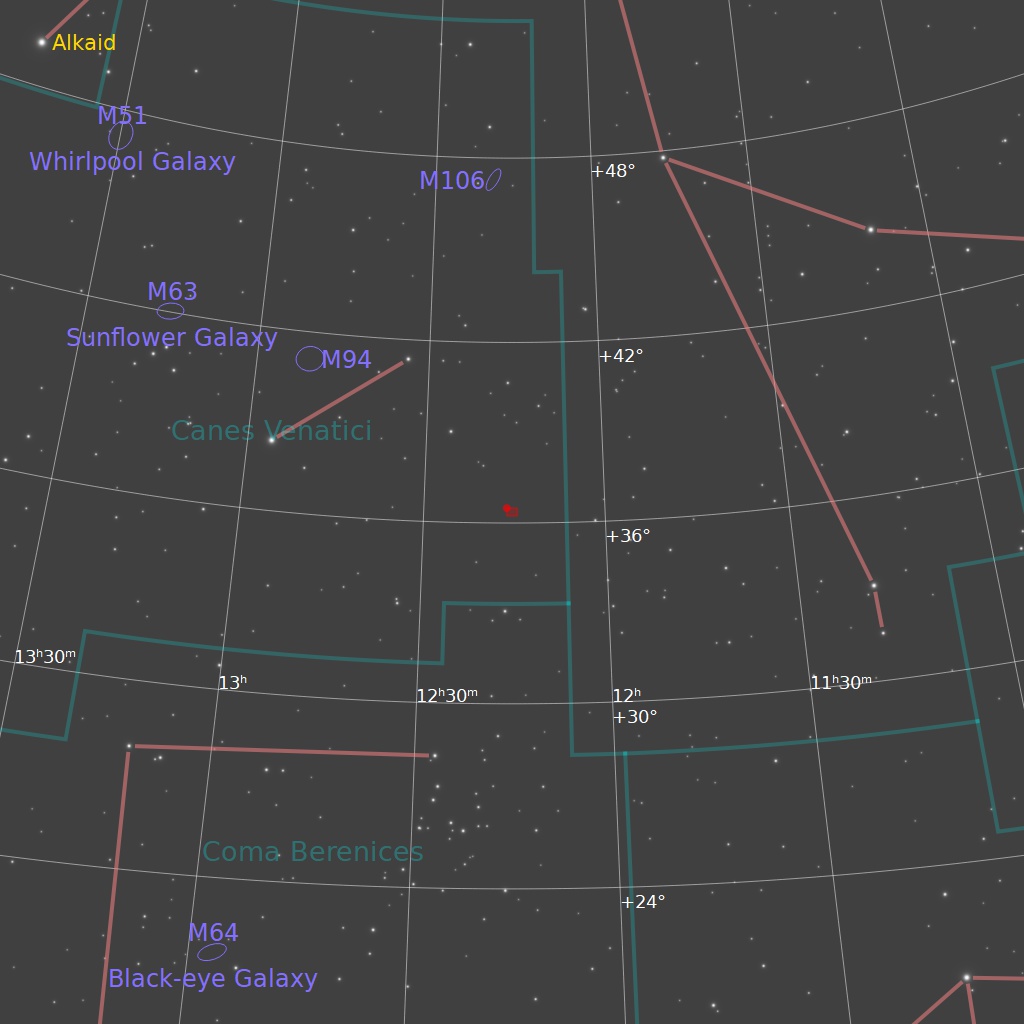
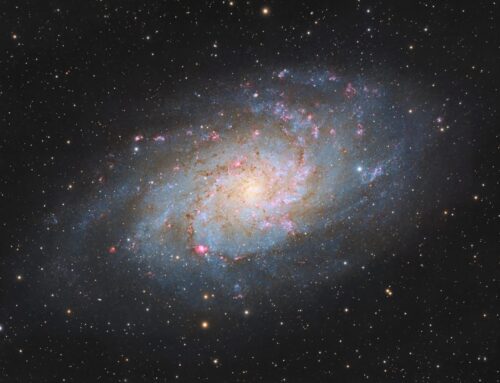

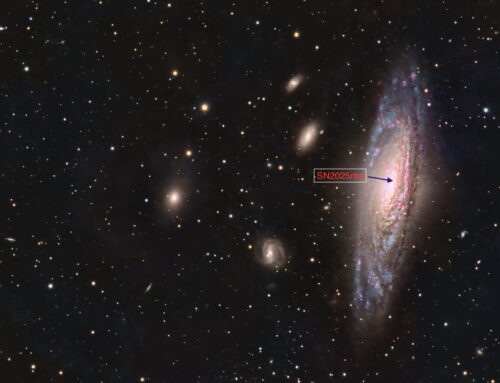
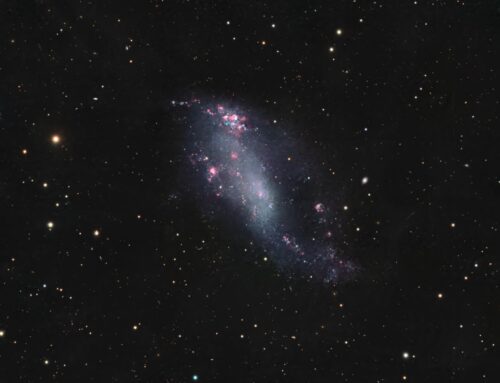

Excelente foto, Ron. Difícilmente superable con medios de aficionado. Muy interesante la descripción del procesado. Enhorabuena.